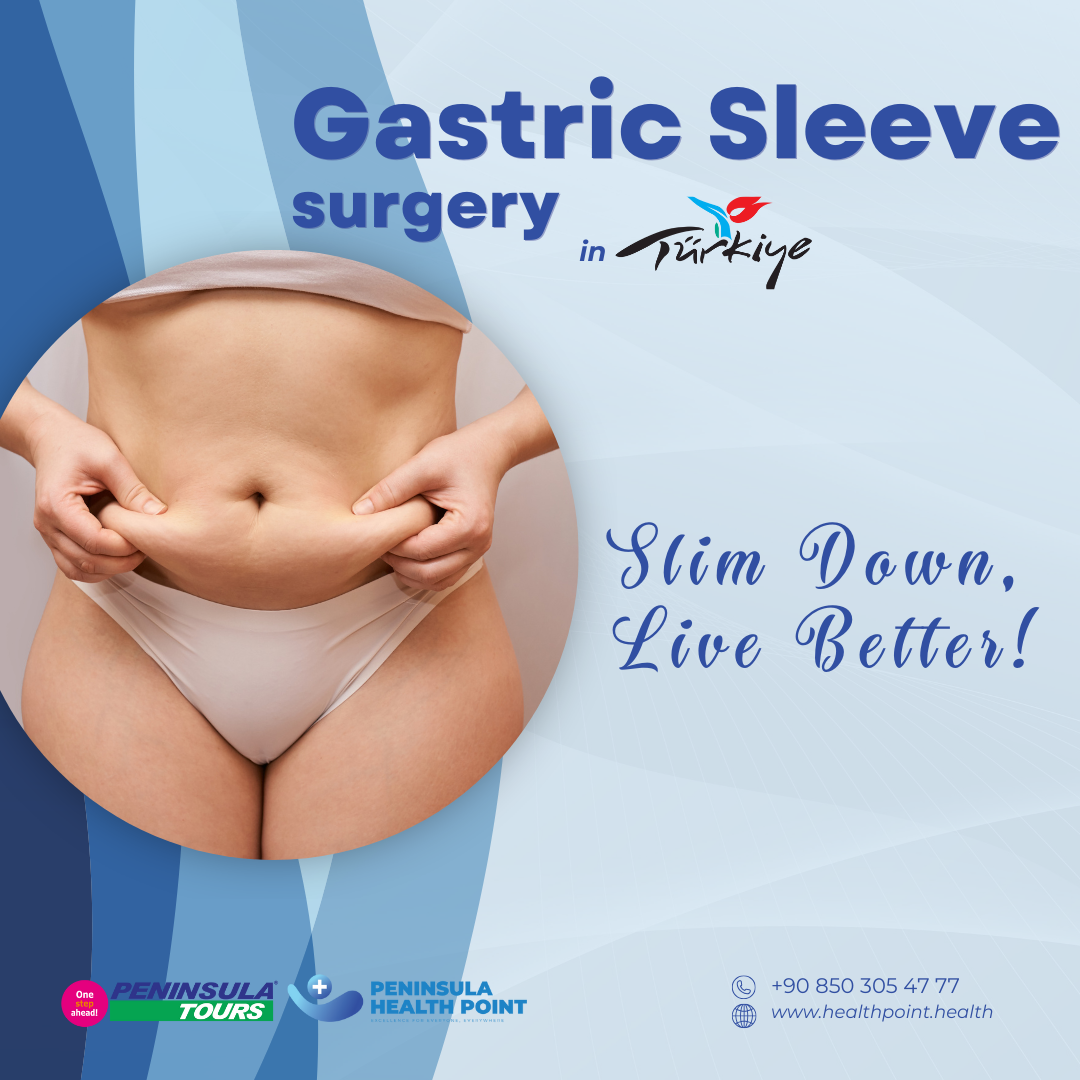
Gastric Sleeve surgery, also known as sleeve gastrectomy or vertical sleeve gastrectomy (VSG), is a surgical weight loss procedure that involves the removal of a large portion of the stomach to create a smaller, sleeve-shaped pouch. This procedure restricts the amount of food that can be consumed and reduces hunger by decreasing the production of appetite-regulating hormones.
How is the procedure performed?
- Preparation and Anesthesia: Before surgery, the patient undergoes preoperative preparations, including changing into a surgical gown and having an intravenous (IV) line inserted for medication delivery. Once in the operating room, the patient receives general anesthesia to ensure they are unconscious and pain-free throughout the procedure.
- Incisions and Access: The surgeon makes several small incisions, typically ranging from 1 to 5, in the abdomen. These incisions serve as access points for surgical instruments and a laparoscope, a thin tube with a camera and light attached, which allows the surgeon to visualize the internal organs on a monitor.
- Stomach Resection: Using specialized instruments and guided by the laparoscope, the surgeon carefully separates the stomach from surrounding tissues and identifies the greater curvature. About 75-85% of the stomach along the greater curvature is then removed, leaving behind a sleeve-shaped pouch.
- Closure and Reinforcement: Once the stomach is resected, the surgeon meticulously seals the remaining portion with surgical staples or sutures. In some cases, the staple line may be reinforced with additional sutures or bio-absorbable materials to enhance strength and reduce the risk of leakage or complications.
- Examination and Hemostasis: After the sleeve gastrectomy is completed, the surgical team inspects the staple line and surrounding tissues to ensure there is no bleeding or other abnormalities. Any bleeding vessels are addressed promptly using cauterization or suturing techniques to achieve hemostasis and prevent postoperative bleeding.
- Completion and Closure: With the surgery concluded, the abdominal incisions are closed using sutures or surgical staples. Sterile dressings are applied to the wounds to promote healing and prevent infection.
- Recovery and Postoperative Care: Following surgery, the patient is carefully monitored as they awaken from anesthesia and begin the recovery process. Pain medications, fluids, and postoperative instructions for diet and activity are provided to support the patient's comfort and successful recovery.
|
Gastric Sleeve surgery is performed laparoscopically, meaning it is minimally invasive and involves making small incisions in the abdomen through which surgical instruments and a camera are inserted. The surgeon then carefully removes approximately 75-85% of the stomach along the greater curvature, while preserving the outlet valve (pylorus) and the nerves that control stomach function. |
Benefits of Gastric Sleeve Surgery (Sleeve Gastrectomy) are:
▶ Gastric Sleeve Surgery involves removing a large portion of the stomach, leaving behind a narrow, tube-shaped sleeve or pouch that restricts the amount of food a person can eat. The procedure is typically performed laparoscopically under general anesthesia.
▶ By reducing the size of the stomach, Gastric Sleeve Surgery limits food intake and promotes feelings of fullness with smaller portions. Additionally, the removal of the portion of the stomach that produces ghrelin, a hunger hormone, may help reduce appetite.
▶ Gastric Sleeve Surgery can lead to significant and sustainable weight loss, with individuals typically losing 50- 60% of their excess body weight within the first year after surgery. It is also effective in improving or resolving obesity- related health conditions such as type 2 diabetes, high blood pressure, and sleep apnea.
▶ While Gastric Sleeve Surgery is generally considered safe, potential risks and complications include infection, bleeding, leakage at the surgical site, blood clots, and gastrointestinal issues such as acid reflux or vitamin deficiencies.
It's essential for patients considering Gastric Sleeve surgery to consult with a board-certified surgeon experienced in these procedures to discuss their options, expectations, and any potential risks or complications. The surgery offers a safe and effective option for individuals struggling with severe obesity to achieve significant and sustainable weight loss, improve overall health, and enhance quality of life.
